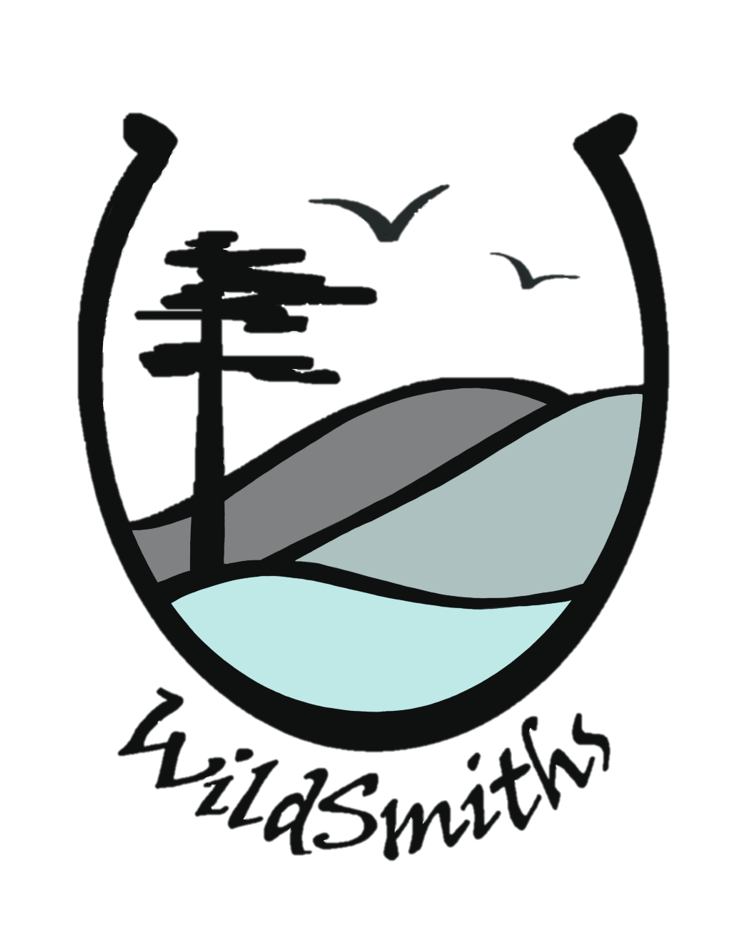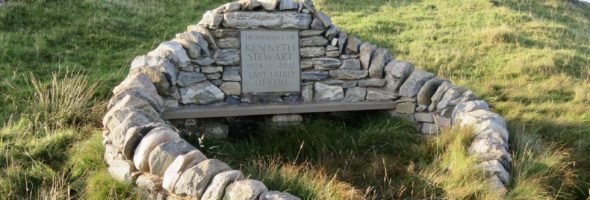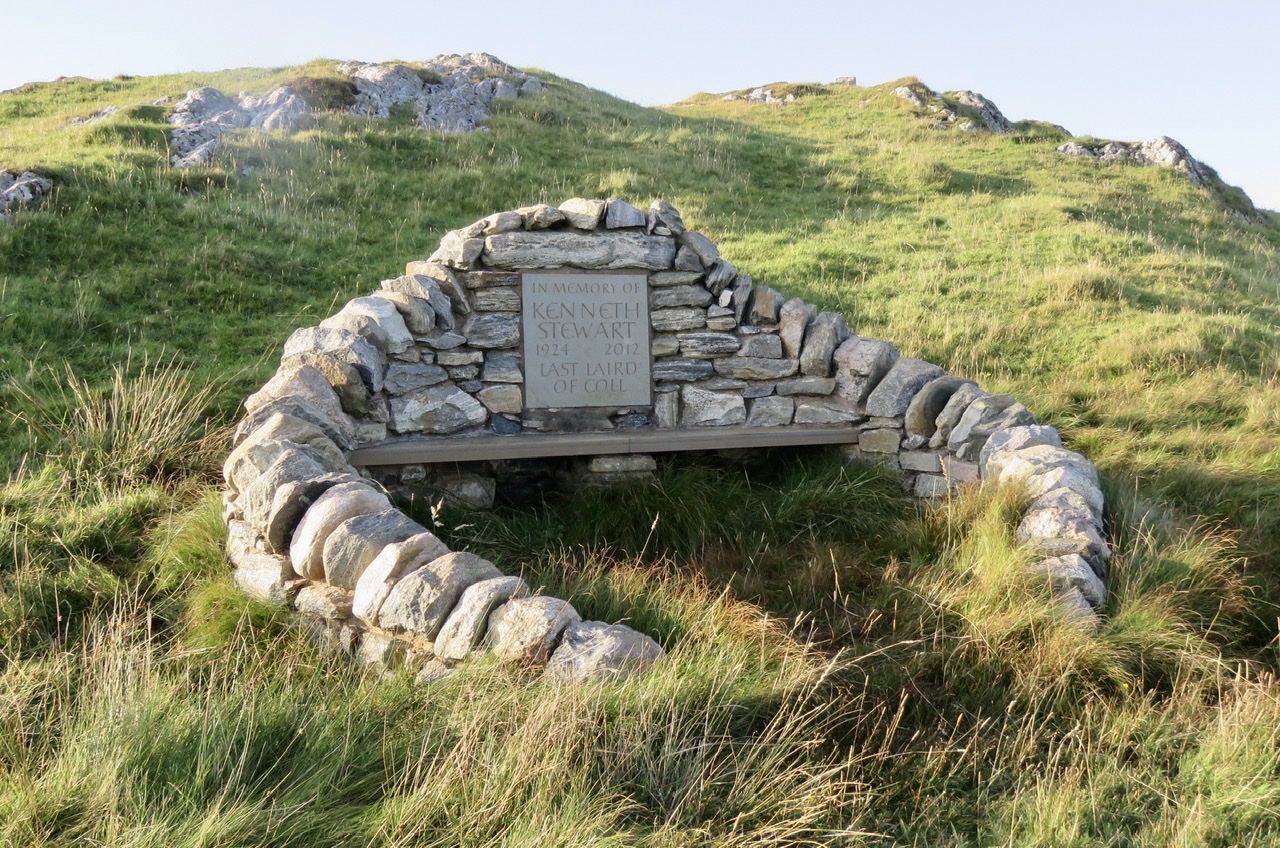
A new route today, taking in the dunes, beach and hills around Feall Bay. Once again we benefited from lovely company and interesting conversation.
Our walk began in the dunes where we saw the (by now) familiar Bloody Cranesbill, a relatively scarce plant in Scotland and one we primarily associate with limestone country in England. Here on the Coll dunes the shelly sands are highly calcareous and freely draining, and so provide ideal conditions for this lime-lover. The first part of its name comes not from its ubiquity (“Look! There’s more of that bloody cranesbill!”) but from the crimson hue of its stems and fruits. We occasionally find a delightful variant with delicately-pencilled, pale pink flowers.
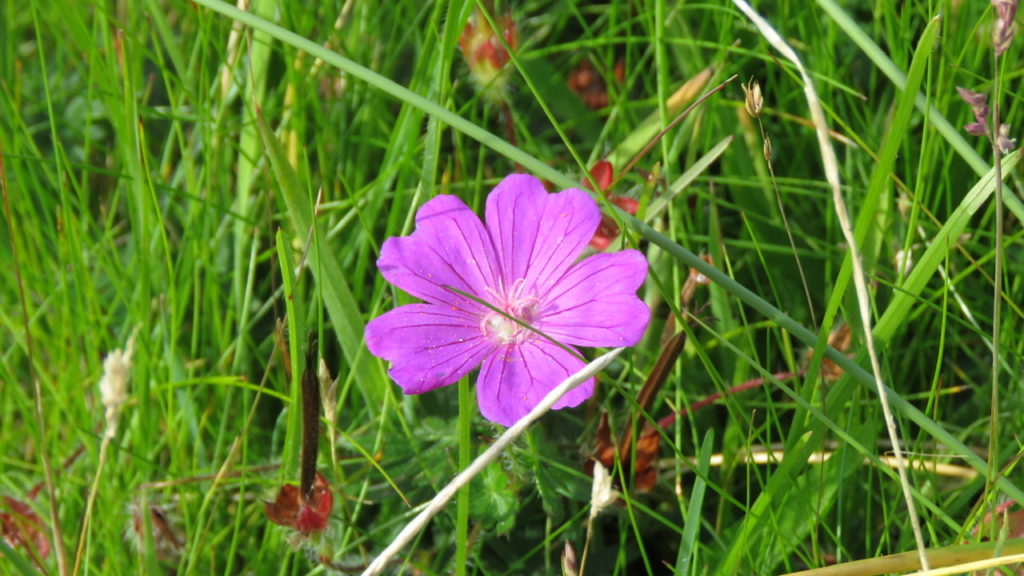
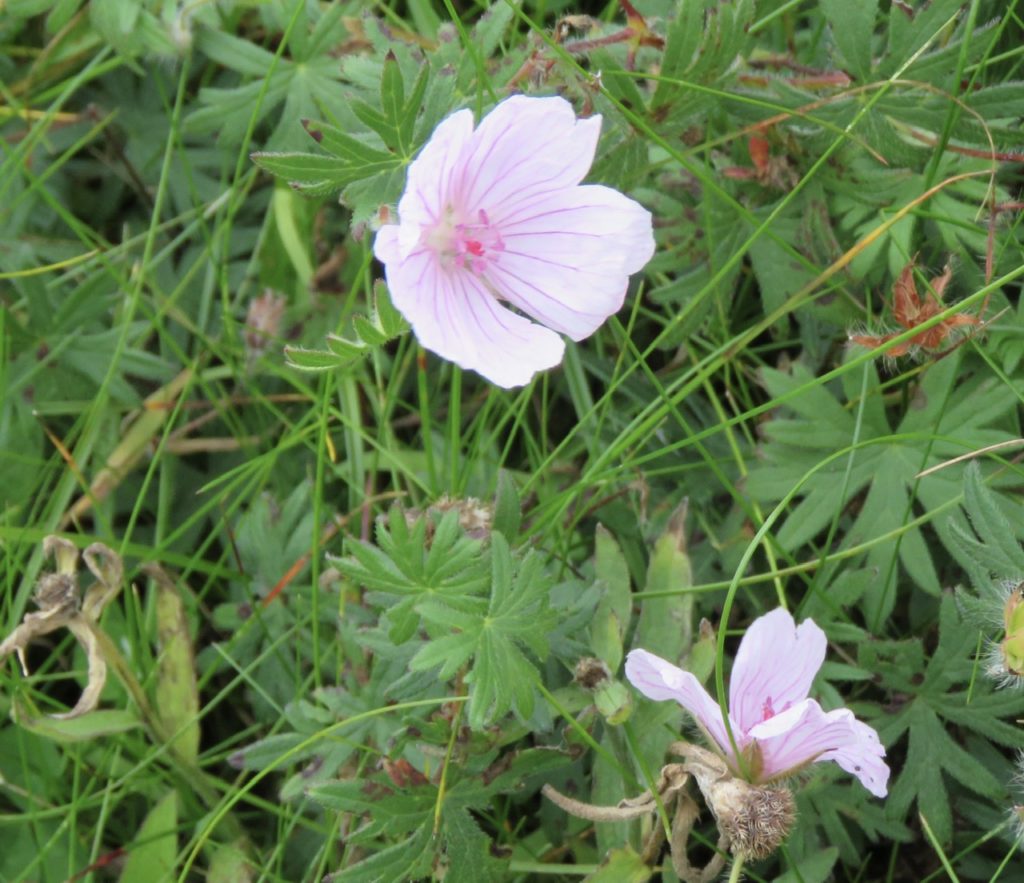
At this time of year though, the architecture of the fruiting bodies comes into its own. At first, the five developing seeds are held at the base of a long spike, which gives rise to the name ‘cranesbill’ for its resemblance to the distinctive head and bill of a crane. Later, the whole structure unfurls and the now mature seeds are lifted aloft on individual arms resembling a candelabra. The purpose of this complexity is presumably to aid the dispersal of the seeds, as knocking against the dried and brittle structure dislodges and propels them.
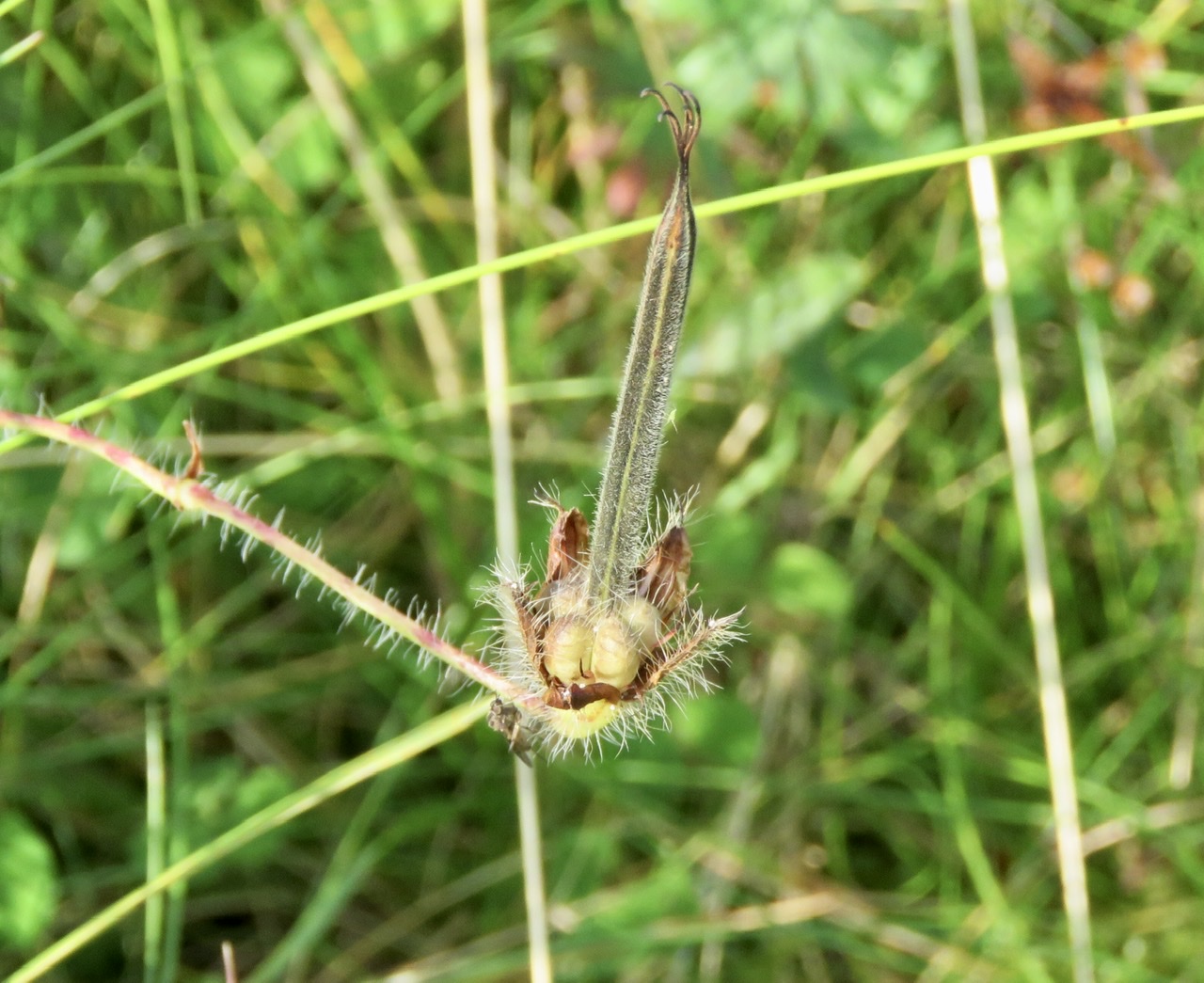
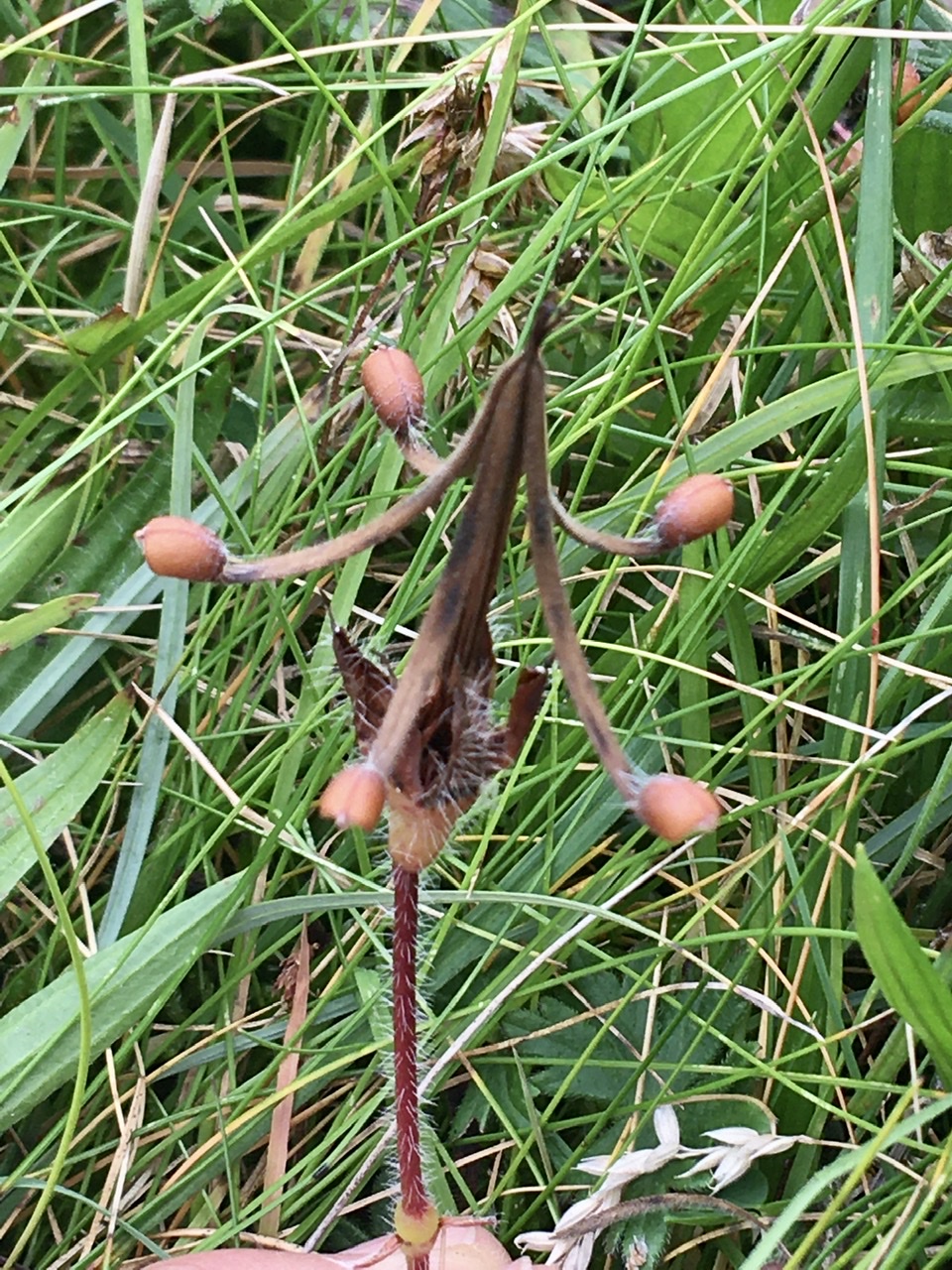
A tawny female Kestrel glides effortlessly over our heads and across the dunes. Not a permanent presence on the island by any means, this is almost certainly a wandering individual just passing through, like the previous day’s Short-eared Owl in the same location.
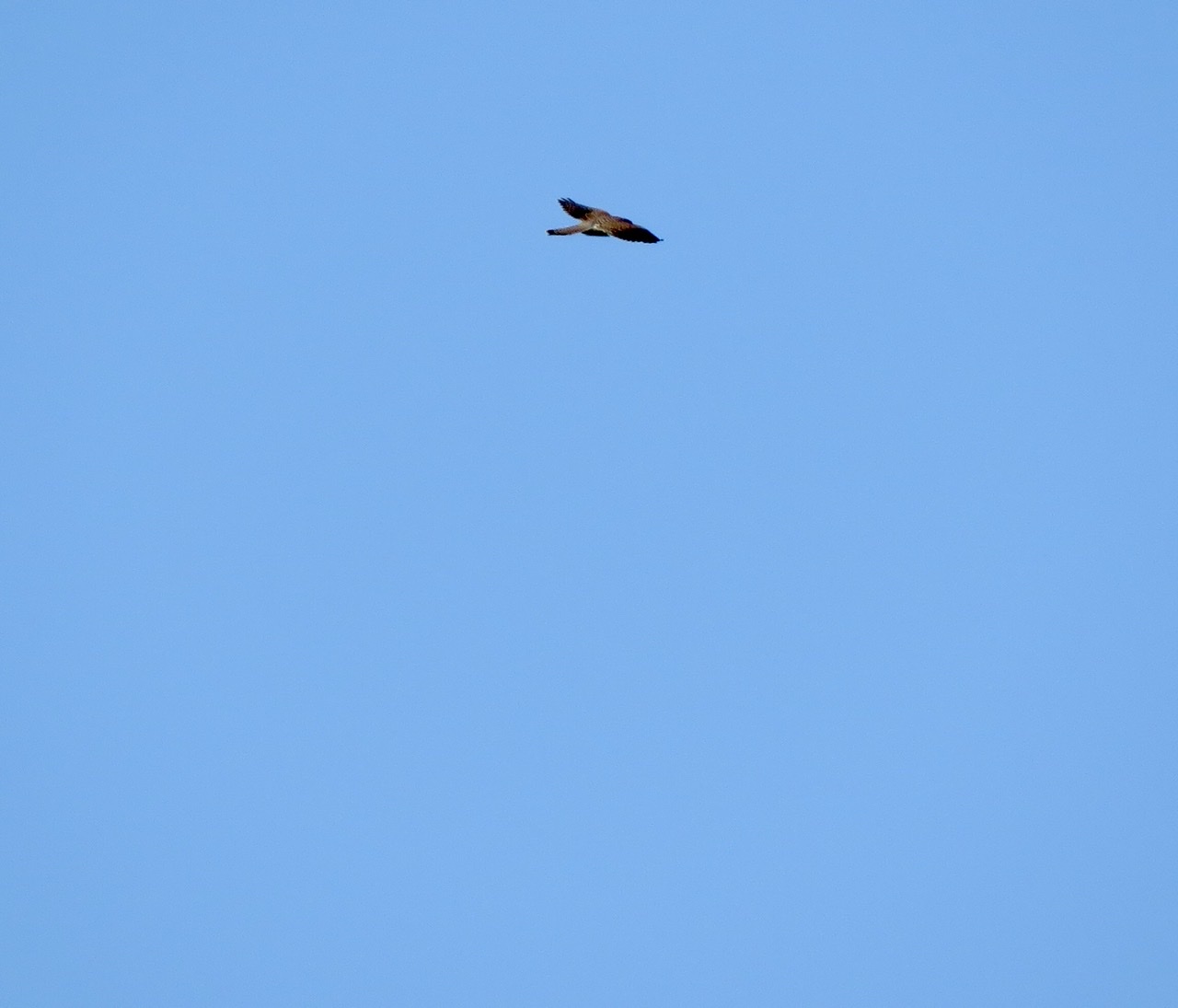
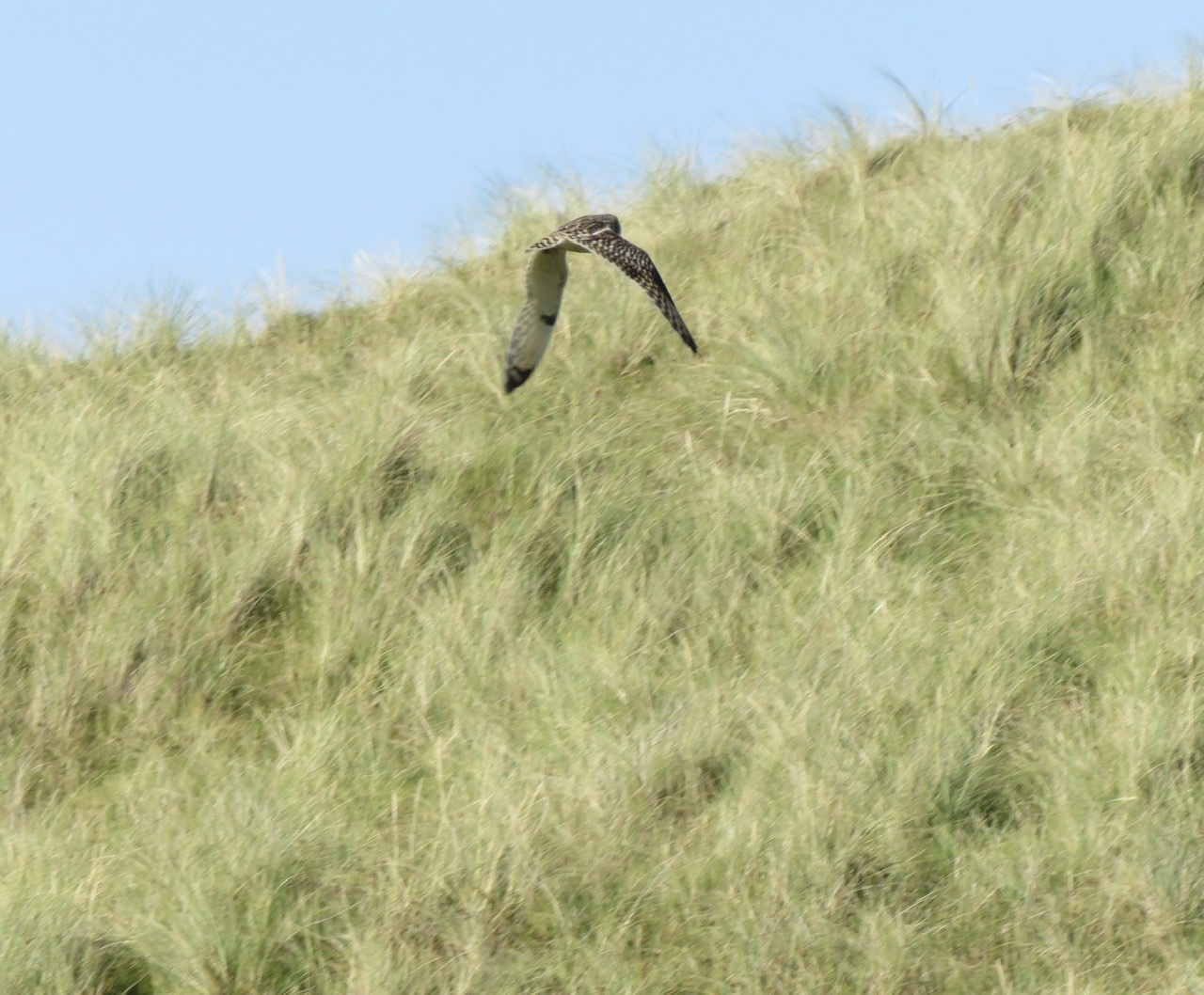
Standing erect in the dunes, like ancient sculptures, are isolated remnants of a natural concrete (a calcretion) caused by the percolation of water down through the dunes, dissolving the calcium carbonate and then drying and setting. The effect (if not the scale) reminds one of Monument Valley in the States. Our clients told us that these small towers are known in German as (what sounded like) “Eisberglandschaft” – which translates as ‘iceberg landscape’ (I’m happy for my spelling to be corrected here!) The exposed sandstone is soft and friable and is popular with sheep and cattle (as scratching posts) and you often find Wheatears nesting in hollows at the base of them.
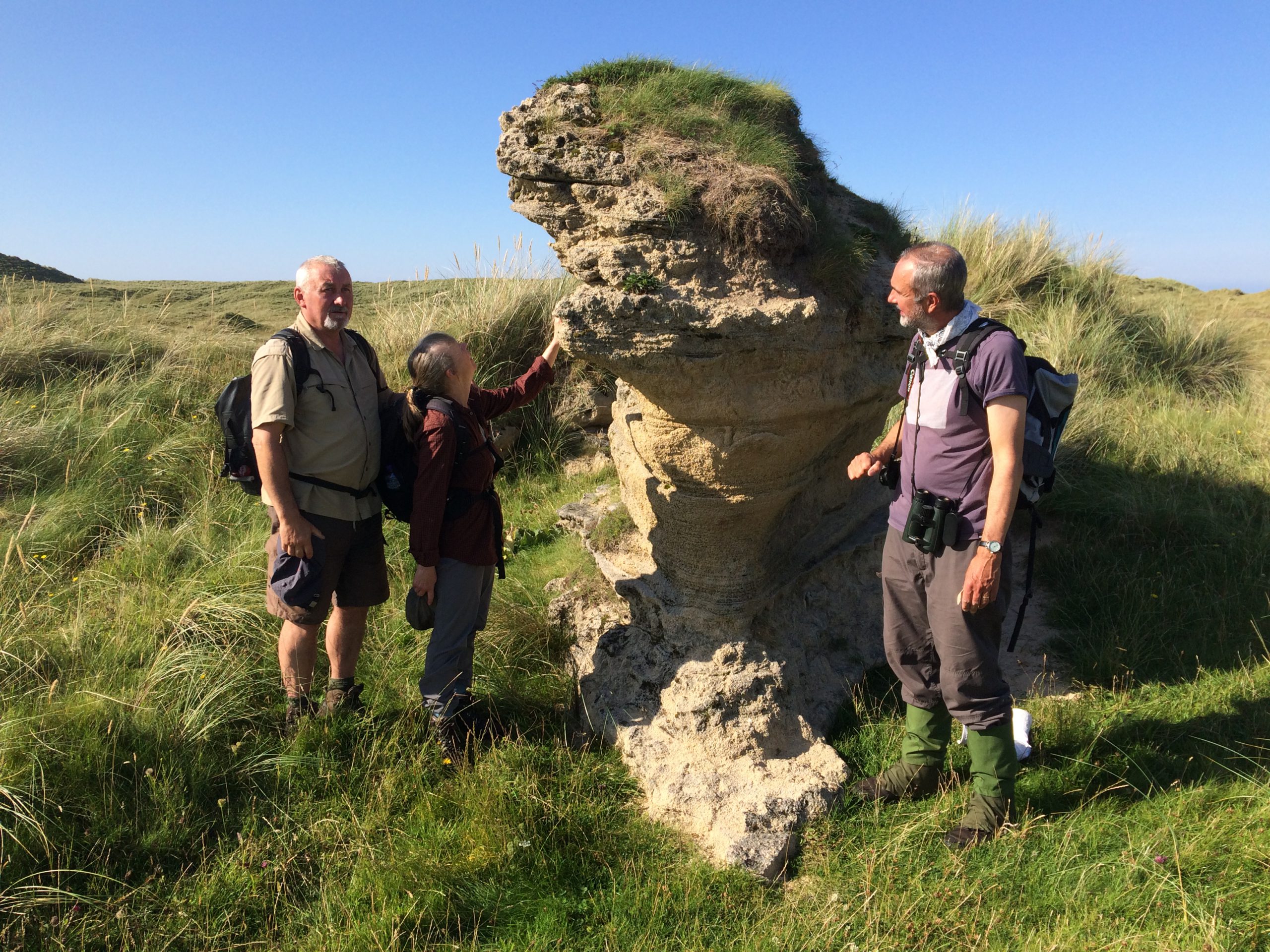
Next, to Bheinn Bheag, which means ‘little hill’ in Gaelic, for a spot of bay watching. We quickly picked up several Shags, doing their best to look like divers, in the rolling waves. Then the real thing surfaced: a Great Northern Diver. Our first of the year on Coll. These arctic birds don’t breed in Britain, but our waters do provide important wintering grounds for them.
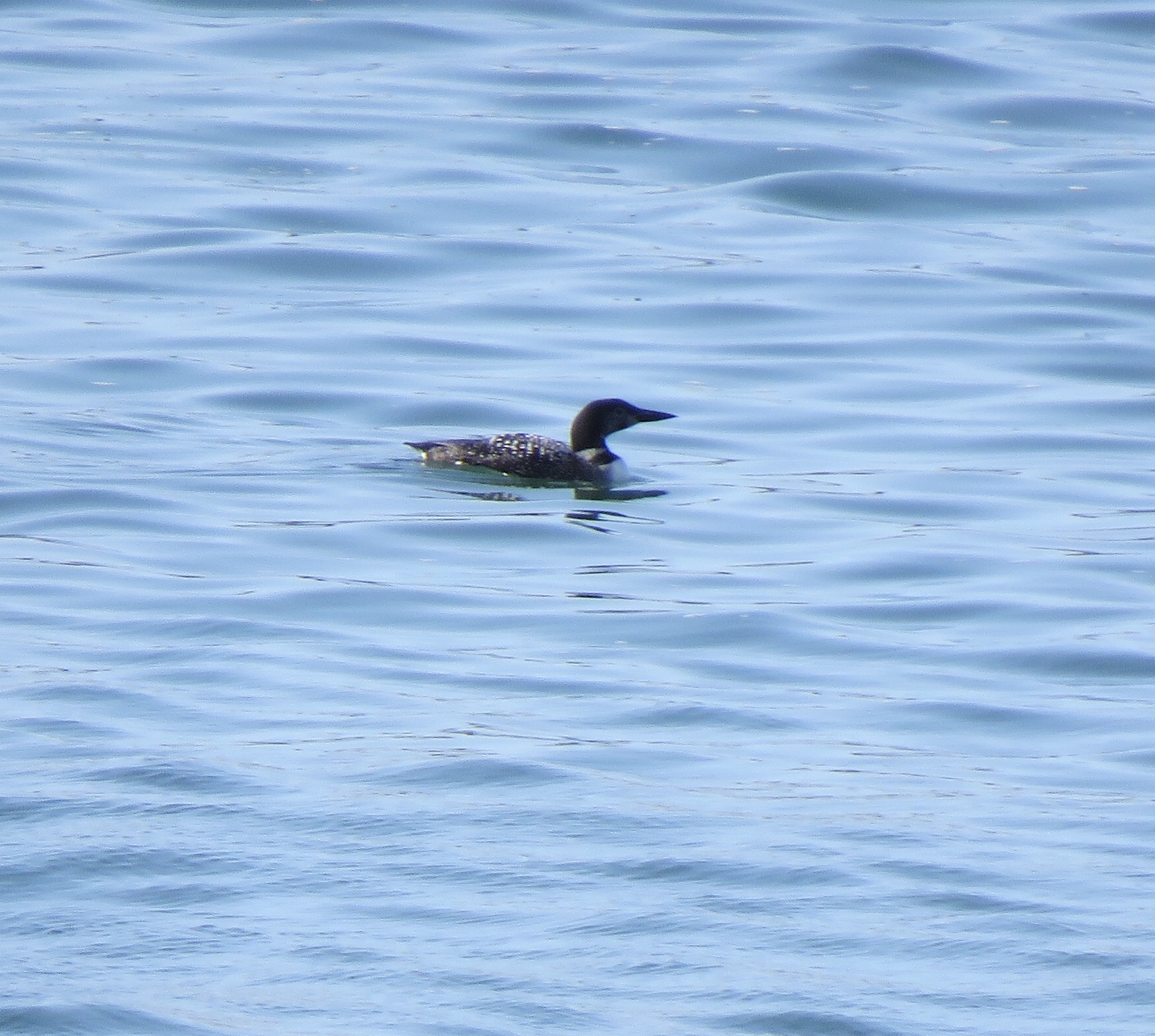
Finally we ascended to the Last Laird’s Lookout on the neighbouring Ben Feall. Built in 2012 to mark the death of the last Laird of Coll, Kenneth Stewart, this sheltered seat commands a magnificent view across the island to the castles at Breachacha.
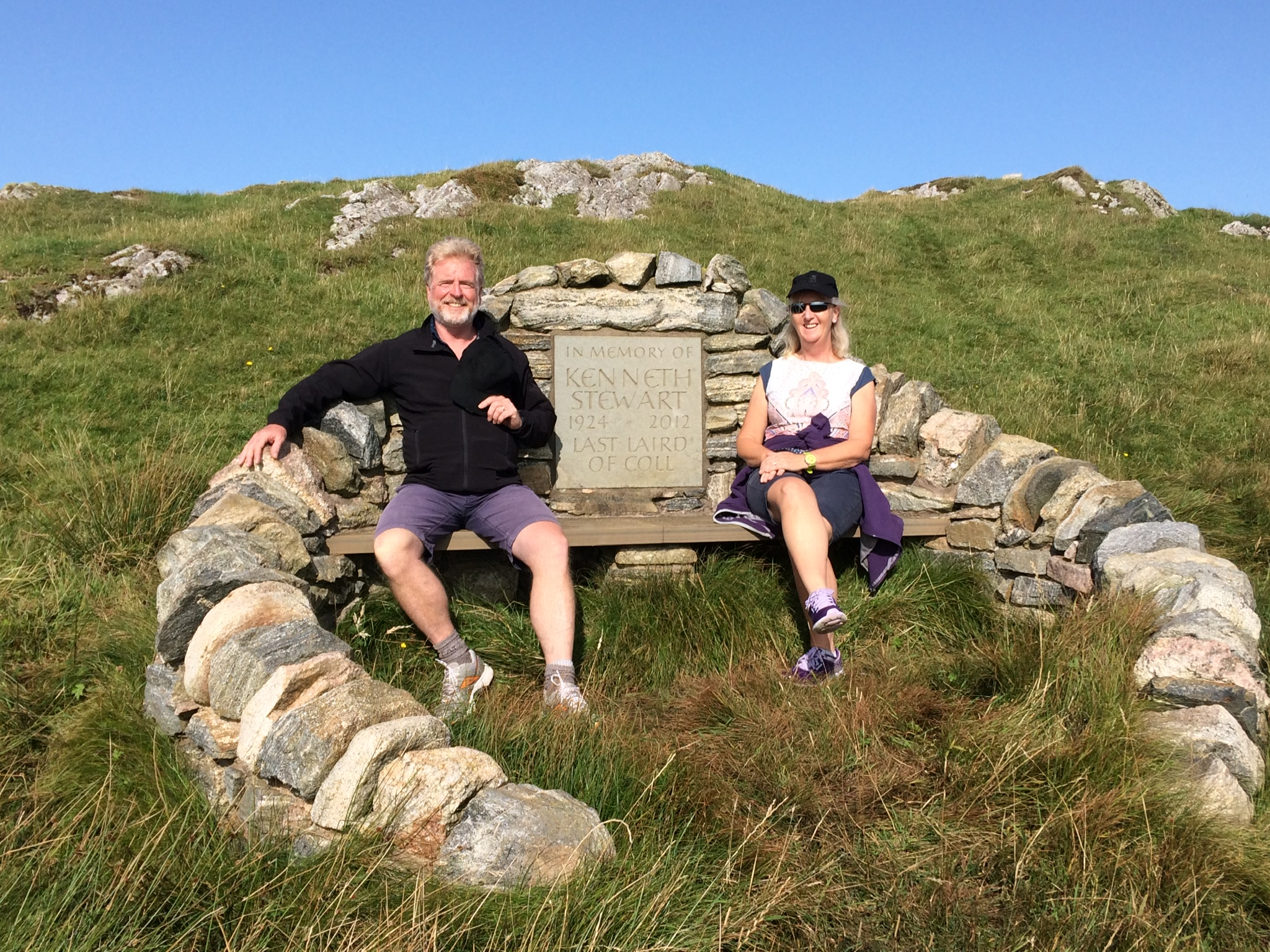

WildSmiths
September 2020
